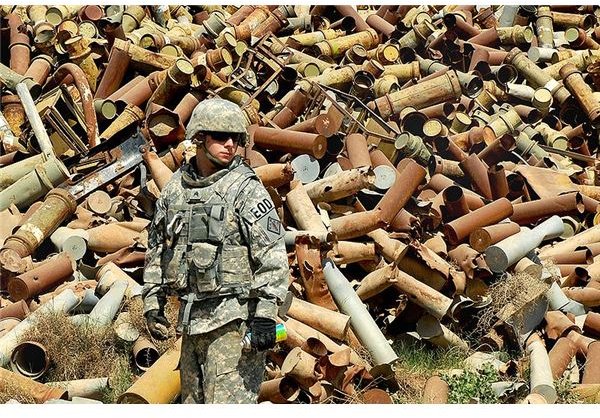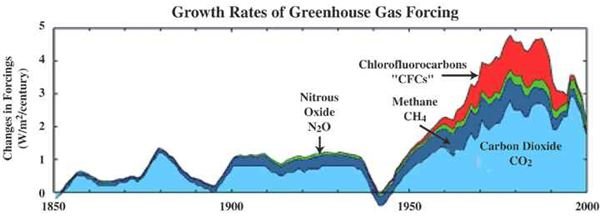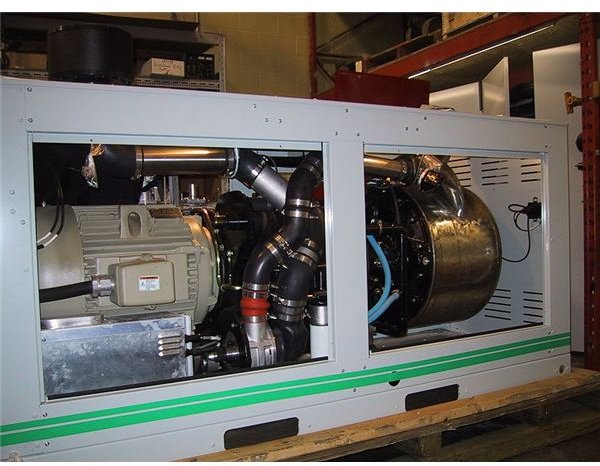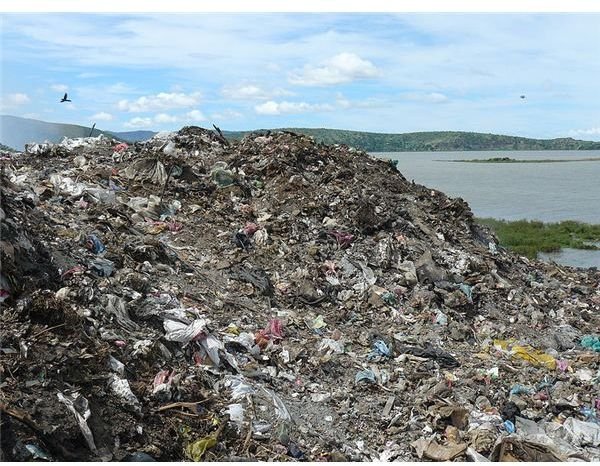What is Solid Waste: Pollution Effects of Solid Waste
Solid waste is a collective term used to distinguish non-biodegradable materials and discards that come from sources like:
-
Households
-
Businesses and Commercial establishments
-
Manufacturers or Industrial sites
-
Biomedical sources like hospital and clinics.
They are the trash collected by the municipal waste management units for segregation according to the process of disposal.
Solid wastes are generally composed of nonbiodegradable and non-compostable biodegradable materials. The latter refer to solid wastes whose biodeterioration is not complete; in the sense that the enzymes of microbial communities that feed on its residues cannot cause its disappearance or conversion into another compound.
Parts of liquid waste materials are also considered as solid wastes, where the dredging of liquid wastes will leave solid sedimentation, to which proper waste management techniques should also be applied.
What Is Pollution Caused by Solid Waste?

Solid waste pollution is when the environment is filled with nonbiodegradable and non-compostable biodegradable wastes that are capable of emitting greenhouse gases, toxic fumes, and particulate matters as they accumulate in open landfills.
These wastes are also capable of leaching organic or chemical compositions to contaminate the ground where such wastes lay in accumulation.
Solid wastes carelessly thrown in streets, highways, and alleyways can cause pollution when they are carried off by rainwater run-offs or by flood water to the main streams, as these contaminating residues will reach larger bodies of water.
The Effects of This Pollution to Climate Changes

Studies by scientists at the National Academy of Sciences reveal that the Earth’s surface temperature has increased by one degree Fahrenheit in the last century. However, what was alarming was the noticeable acceleration of warming temperatures during the last two decades. Stronger evidences have connected the acceleration to the mounting presence of greenhouse gases, namely:
- Carbon Dioxide
- Methane
- Nitrous Oxide .
Most of these greenhouse gases emanate from the chemical compositions widely used for human activities during the past 50 years. Scientists believe that the increase in carbon dioxide by at least 30 percent can be traced back to the initial years of industrialization.
Additional human activities, which involved the use and consumption of industrially manufactured products, including the use of automobiles and its fossil fuel, all contributed to the sudden surge of heat-trapping greenhouse gases in the Earth’s atmosphere. In addition, power generating plants used by industries and consumers alike, contribute 98 percent to carbon dioxide emissions, 24 percent to methane emissions and 18 percent to nitrous oxide.
However, use and consumption are one thing, the accumulation of the non-biodegradable waste in landfills is another. The discarded materials still containing much of the chemical ingredients used in the manufacture of these products created mountainous landfills. The concentration of solid wastes reacting to heat, moistures and air as they lay exposed to the environment also meant a concentration of greenhouse gas emissions.
While in this state, they contributed to the release of greenhouse gases in the Earth’s warming atmosphere. A 1997 survey of total global greenhouse gas emissions showed that about one-fifth of these emissions emanated from the United States.
This is why solid waste management solutions are considered important, in order to lessen the greenhouse gas being added by solid wastes, to global warming climate change.
The Importance of Solid Waste Management
One important aspect of solid waste management (SWM) is the segregation process that ensures proper disposal of solid wastes. Segregation at SWM units includes the classification of wastes into: (1) municipal solid wastes and (2) hazardous solid wastes.
At this point, consumers should be aware that segregation alone requires tremendous costs.
Basic Facts about Municipal Solid Wastes (MSW)
MSWs are mostly discards coming from human activities like, but not limited to:
- Product packaging
- Furniture
- Clothing
- Newspapers
- Paint and paint cans
- Bottles
- Batteries
- Electronic appliances and devices
- Food scraps
- Grass clippings
- Other refuse
Studies show that from a 1960 figure of 2.7 million tons of MSW generated in the US, the figure dramatically increased through the years, reaching a total approximation of 232 million tons by the year 2000. This was further equated as equivalent to 4.5 pounds of waste per person per day in contrast to the 1960 figure, which was equivalent to 2.7 pounds of waste per person per day.
Basic Facts about Hazardous Wastes
Hazardous wastes and their use on land result in refuse and discards requiring proper disposal. These wastes contain nutrients and chemicals that contaminate the air and soil, often reaching groundwater levels.
In spent-washes that contain hazardous wastes, their sedimentations are carried by water run-offs to streams and bodies of water, which tend to contaminate drinking water sources.

Solid Waste Management of Hazardous Wastes
Household Hazardous Wastes (HHW)
Examples of HHWs are :
- Discarded paint materials and their implements, such as brushes, rollers, trays and paint containers
- Cleaners in the forms of solvents
- Oils
- Batteries
- Pesticides
- Other leftover portions of materials and implements containing chemicals, particularly those that are classified as volatile organic compounds or VOCs.
Generally, municipal landfills can accept HHWs, in which the SWM units will be responsible for handling their disposal. However, recent developments and the costs entailed to manage household wastes have caused the implementation of certain local laws.
Industrial Hazardous Wastes
Industrial hazardous waste generators, like manufacturing plants, businesses, laboratories, and universities, are under strict government regulations. They are held responsible and accountable for the proper containment and disposal of their hazardous wastes.
Methods of Solid Waste Disposal

The following SWM disposal practices have been established and are required to be observed in the following order of hierarchy:
(1) Source Reduction
(2) Recycling and Composting
(3) Combustion/Incineration
(4) Landfills
(1) Source Reduction Techniques
Refuse - Environmentalists suggest that another R should be added to the governing principles of waste management, which stands for Refuse. Consumers, as major contributors to solid waste increments, should refuse to use products that make use of packaging or implements made from nonbiodegradable or non-compostable biodegradable materials.
Bans and Restrictions - Some local government units have implemented local laws that exclude nonbiodegradable materials as part of household wastes. Community members who insist on using these materials shall be responsible for their proper disposal. The cost of solid waste management facilities and equipment are taking their toll on community coffers; hence, the matter of source reduction should begin at the consumer level as they become the end-generators of such wastes.
-
The State of Massachusetts, for example, has specifically banned televisions and computer monitors from inclusion in landfills.
-
The State of Minnesota has banned the sale of mercury-filled thermometers, while any other devices, appliances, gadgets, or implements containing mercury are being banned from landfills. The state is also considering the banning of unprocessed MSW such as yard wastes.
-
The State of Illinois has completely banned appliances, implements, and gadgets that contain toxic wastes, which include Freon and chlorofluorocarbon refrigerants, from inclusion in landfills.
-
Accordingly, there are now twenty-two states that ban the inclusion of yard wastes such as leaves, grass clipping, computer paper, newsprint, paper board, plastic, glass, aluminum and steel containers, tires and lead-acid batteries just to name some of the banned solid wastes that used to form part of MSWs.
-
The main considerations for this banning, aside from pollution, are the costs entailed in providing and maintaining solid waste management solutions and facilities for the proper waste disposal of MSW.
Deposit and Refund Systems - Commercial methods of MSW source reduction include the deposit and refund system, which enables the manufacturer to recycle and reuse the containers and packages. To ensure their return, consumers pay fees to be refunded upon the return of the nonbiodegradable material, thereby facilitating the collection and authorized return of packaging materials to its manufacturer.
Donation, Sale and Disposal – Materials that are otherwise discarded and included in landfills are donated to materials exchange centers where they can be properly distributed for recycling, repurposing, and reclaiming methods as ways to reduce solid wastes. Solid wastes included under this program are building materials, furniture, computers, clothing, and appliances.
Laws and Mandates - This refers to state enacted laws imposed against products and their packaging coming from outside sources and the prevention of their entry, as well as the prohibition of their manufacture within the state’s jurisdiction. If allowed, this includes the requirement of submitting a manufacturer’s source reduction plan. Examples of these mandates are:
-
The State of Oregon requires all plastic containers meet source reduction measures, such as reusability, for at least five times in five years.
-
The States of Wisconsin and Iowa require that products meet a required 25 percent recycling goal.
-
Impositions of Higher Taxes - Excessive packaging or single-use products containing hazardous compounds are imposed with higher taxes to discourage solid waste generation and encourage source reduction.
Methods of Solid Waste Disposal (continuation)

(2) Recycling Methods Including Composting
Different methods of recycling apply to different types of solid wastes and are often designed as sustainable methods:
-
Composting involves careful selection of materials regarded as compostable biodegradable and purely compostable organic materials. For more information on compostable solid wastes, please refer to a separate article about “Defining Biodegradable and Comparing to Compostable” .
-
Repurposing and Reclaiming Scrap Components
Electronic appliances and various electrical products produce scrap wastes, which provide a secondary supply of reusable materials like:
- Metals, which may include, gold, silver, platinum, iron, copper, aluminum, nickel zinc, tin and lead,
- Minerals like mercury and cadmium,
- Halogens like arsenic, bromine, and chlorine
- Organic plastics
- Glass
- Ceramics
The recycling of these valuable components reduces the need for mining and other outsourcing methods but requires efficient technical recycling processes and effective emission controls.
- Recycling of PET Bottles
Sustainable methods of recycling PET bottles are also in place as they are used in textile manufacturing. Details about this recycling method can be gleaned from the article about “Polyester fiber from Recycled Bottles Providing Cost Efficiency in Textile Manufacture”.
- Recycling of HDPE Plastics
Sustainability in the method of recycling high-density polyethylene or HDPE plastics, otherwise known as plastic No. 2, makes use of technologies that convert these plastic materials into polywood or poly lumber. These are ideal for use in outdoor furniture as they posses the durability and weather resistance required for outdoor use. See this related article about “Ending the Search for Patio Sets Made from Recycled Materials” for more information.
Other innovative and creative methods of recycling materials at household levels are, likewise, means of reducing MSW management costs.

(3) Combustion or Incineration of Solid Wastes
This is the process of burning MSWs in a way that will generate energy and at the same time reduce the amount of solid wastes left in open landfills. However, this method operates under the regulation of the Environmental Protection Agency’s Office of Air and Radiation, inasmuch as air emissions are the main environmental concerns. Accordingly, there are about 102 combustors which have been operating in the US since the year 2000, and being used for energy recovery. They are said to have the capacity to burn as much as 96,000 tons of MSWs in a day.
(4) Landfills
Landfills are the last in the hierarchy of solid waste management solutions, and the aim is to reduce the number of landfills operating on U.S. soil. Although smaller landfills have been eliminated, which resulted in a decrease in the number of landfills from 8,000 to 1,967 by the year 2000, they have been replaced by larger and newer landfills, because the increase in solid waste has remained constant.
Landfills are regulated primarily by the state laws and local government laws, all of which, take into consideration existing tribal laws in the areas where landfills operate. These regulating units implement sets of standards, which landfill operations should meet.
Summary
In understanding what is solid waste and the effects of solid waste pollution, we are drawn to the conclusion that consumers can help hasten the achievement of zero-wastes in the environment,by minimizing, if not eliminating the use of nonbiodegradable or solid wastes.
Considering the immensity of the costs of remedies and solutions needed in order to carry-out effectively solid waste management processes, isn’t it high time for consumers to realize that money spent on managing solid wastes could have better use?
Reference Materials and Image Credit Section
References:
- Sustainable recycling of electronic scrap – https://www.lbma.org.uk/assets/Alch59Corti.pdf
- Climate Change-Almanac of Policy Issues – https://www.policyalmanac.org/environment/archive/climate_change.shtml
- Handbook of solid waste management By Frank Kreith, George Tchobanoglous —https://books.google.com.ph/books?id=BzTNoKw6HhYC&pg=SA6-PA10&lpg=SA6-PA10&dq=source+reduction+methods+for+solid+waste+management&source=bl&ots=crO4N8HRZ0&sig=JzRVFV61XsW7SsZWUi0DV3zQwJ4&hl=en&ei=TKrDTK73J4bRcbjj6MwN&sa=X&oi=book_result&ct=result&resnum=9&ved=0CD4Q6AEwCA#v=onepage&q=source%20reduction%20methods%20for%20solid%20waste%20management&f=false
Image Credits:
- https://commons.wikimedia.org/wiki/File:Waste_2007_EPA.gif
- https://commons.wikimedia.org/wiki/File:CHURECA7.JPG
- https://commons.wikimedia.org/wiki/File:Flickr_-_The_U.S._Army_-_Sheik_Khalid_scrap_yard.jpg
- https://commons.wikimedia.org/wiki/File:Growth_rates_of_greenhouse_gases_figure1m.jpg
- https://commons.wikimedia.org/wiki/File:McDonalds_1879.JPG
- https://commons.wikimedia.org/wiki/File:Non-selective_domestic_waste_sorting_machine.JPG
- https://commons.wikimedia.org/wiki/File:STM_Stirling_Generator_set.jpg
